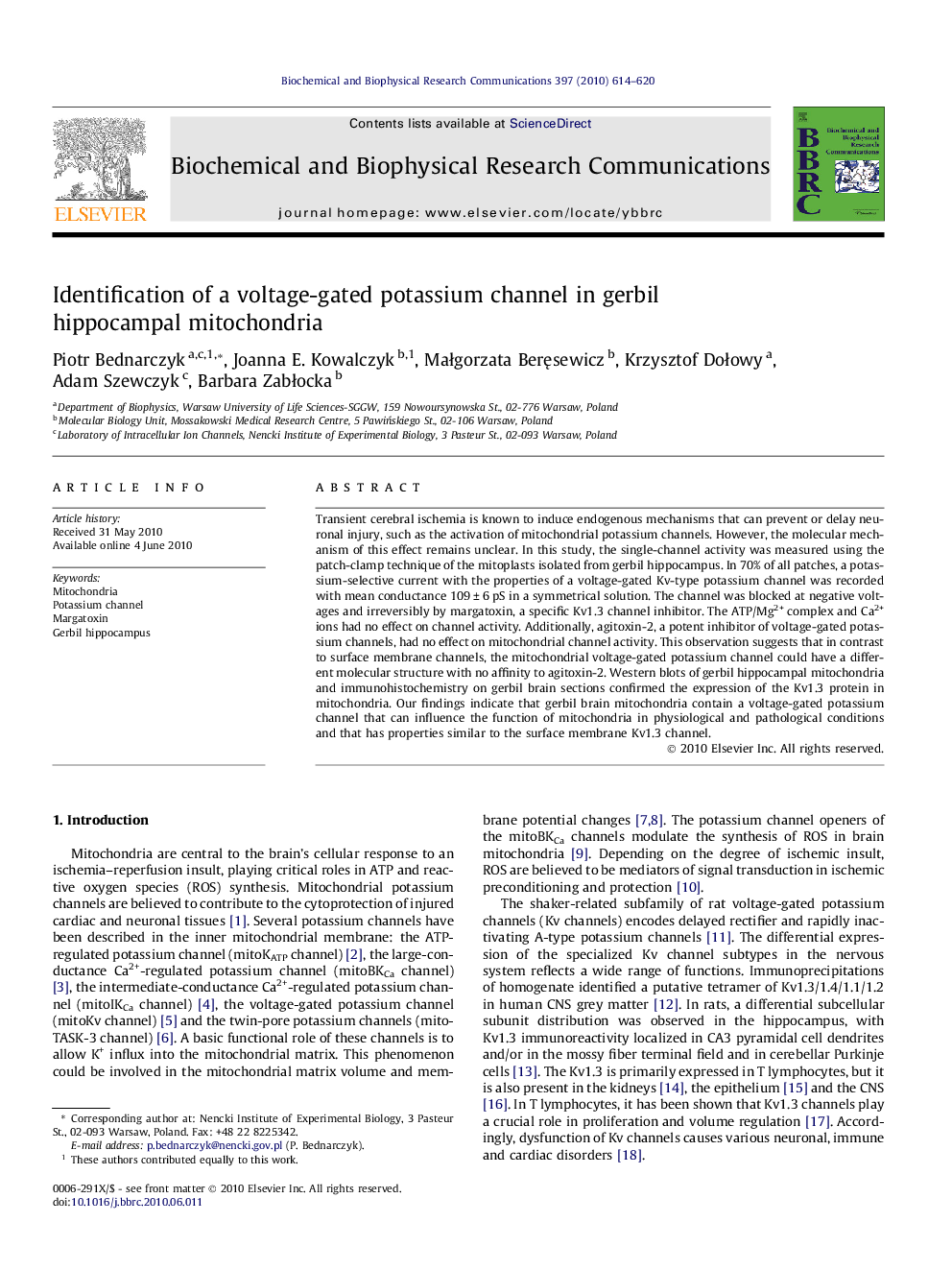| Article ID | Journal | Published Year | Pages | File Type |
|---|---|---|---|---|
| 1931920 | Biochemical and Biophysical Research Communications | 2010 | 7 Pages |
Transient cerebral ischemia is known to induce endogenous mechanisms that can prevent or delay neuronal injury, such as the activation of mitochondrial potassium channels. However, the molecular mechanism of this effect remains unclear. In this study, the single-channel activity was measured using the patch-clamp technique of the mitoplasts isolated from gerbil hippocampus. In 70% of all patches, a potassium-selective current with the properties of a voltage-gated Kv-type potassium channel was recorded with mean conductance 109 ± 6 pS in a symmetrical solution. The channel was blocked at negative voltages and irreversibly by margatoxin, a specific Kv1.3 channel inhibitor. The ATP/Mg2+ complex and Ca2+ ions had no effect on channel activity. Additionally, agitoxin-2, a potent inhibitor of voltage-gated potassium channels, had no effect on mitochondrial channel activity. This observation suggests that in contrast to surface membrane channels, the mitochondrial voltage-gated potassium channel could have a different molecular structure with no affinity to agitoxin-2. Western blots of gerbil hippocampal mitochondria and immunohistochemistry on gerbil brain sections confirmed the expression of the Kv1.3 protein in mitochondria. Our findings indicate that gerbil brain mitochondria contain a voltage-gated potassium channel that can influence the function of mitochondria in physiological and pathological conditions and that has properties similar to the surface membrane Kv1.3 channel.
